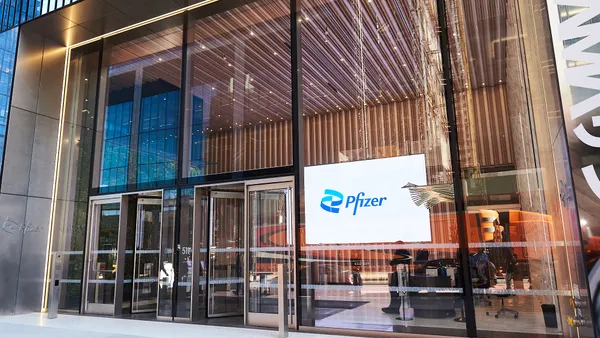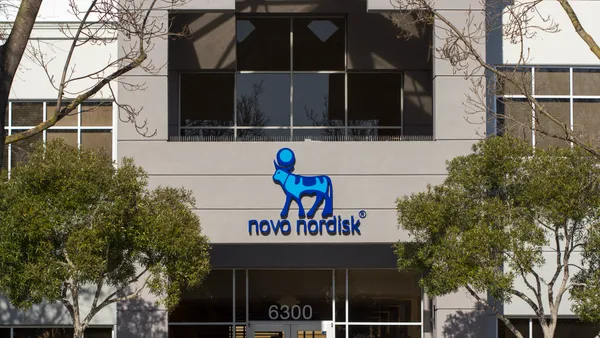Managed MARKETS
Experts on this Topic Sean Brandle. National Rx Practice Leader, The Segal Company, New York; The Segal Company is a private employee-owned actuarial and consulting firm. For more information, visit segalco.com.
Larry Olson. VP and Practice Leader, Payer Markets, TNS Healthcare, New York; TNS Healthcare provides market research consulting and custom advisory services to the worldwide pharmaceutical, biotech, and medical-device industries, as well as health-focused ad agencies, media, and financial analysts. For more information, visit tnsglobal.com.
Jeff Thomas. President, inVentiv Strategy & Analytics, a division of inVentiv Health, Somerset, N.J.; inVentiv Strategy & Analytics provides clinical, communications, and commercialization services to take pharma products from development through launch to commercial success. For more information, visit inventivhealth.com.
The stakes are high. Total U.S. spending on pharmaceuticals was projected to top $229 billion in 2007, and, according to the Centers for Medicare and Medicaid Services, prescription drug spending is expected to exceed $497.5 billion by 2016. With an estimated 90% of Americans taking one or more prescription medications in a year and almost three quarters of the American population covered by some type of managed pharmacy plan, it’s more important than ever for pharmaceutical companies to have a formulary strategy in place that favorably positions their products for reimbursement. PricewaterhouseCoopers (PWC) estimates that 213 million people, or about 71% of the U.S. population, are enrolled in private plans with a pharmacy benefit manager (PBM). Overall, PWC researchers estimate that about 90% of the drug spending by the Medicare population will be in private plans managed by PBMs in 2008. For the non Medicare population, about 76% of the spending will be in private plans where the pharmacy benefit is managed. On average, about 82% of prescription drug spending will be done through privately managed plans. According to Jeff Thomas, president of inVentiv Strategy & Analytics, a division of inVentiv Health, historically managed care organizations have negotiated as aggressively as possible. The difference now, he says, is that they are also looking to position products on their formularies based on differentiating clinical information. “The days of formulary placement of marginally differentiated products based on price may be going away,” Mr. Thomas says. “Pharmaceutical companies are much more aware when conducting their trials to differentiate their products in some way from both a clinical and outcomes perspective and provide data on certain segments of the population that the drug may impact.” Sean Brandle, national Rx practice leader at The Segal Company, adds that plan sponsors are starting to take a closer look at some of the specialty products to evaluate their efficacy. “PBMs are looking for studies that try to quantify the actual life improvement attributable to some of these expensive drugs,” he says. Larry Olson, VP and practice leader, payer markets, at TNS Healthcare, notes that pharmacoeconomic based product messages also will need to be developed and researched with pharmacy medical directors who participate in P&T committees based on what impacts brand preference for formulary placement. “Pharmaceutical companies have to have organizational alignment, with the brand management team working closely with the managed care account team,” he says. “Many of these groups are not working in concert together, which I think is a problem.” FORMULARY FACTORS TO CONSIDER In addition to clinical outcomes, pharmaceutical companies will have to contend with myriad other factors that will impact their formulary strategies, including Medicare Part D, generics, and specialty products. Recently, health plans have been increasing patient copayments and using benefit designs that focus on the use of generics. According to Mr. Olson, these efforts to manage Medicare Part D drug costs are likely to have an impact on private plans. “As managed care Part D plan providers manage utilization with restrictive benefit designs moving into next year, we can expect a spill over effect of these reimbursement trends and policies into the non Medicare private population,” he says. “Part D plans will require higher copays for branded and even generic PHARMACY BENEFIT MANAGERS WILL BE EXERTING MORE CONTROL OVER BUDGETS,ESPECIALLY IN THE AREAS OF UNDERSTANDING A Product’S CLINICAL VALUE,NEGOTIATING PRICE CONCESSIONS, AND INCREASING PATIENT FINANCIAL OBLIGATIONS FOR ACCESS TO CERTAIN PRODUCTS. BY DENISE MYSHKO LARRY OLSON TNS HEALTHCARE We’re moving into a new era. MCOs are going to be expecting steeper discounts and rebates, making aggressive contracting a must for pharma companies that want to get their products on preferred formularies. SEAN BRANDLE THE SEGAL COMPANY PBMs are looking for studies that try to quantify the actual life improvement attributable to some of these expensive specialty drugs, and they are taking a closer look at these products to evaluate their efficacy. Prescription drug spending is projected to reach $497.5 billion by2016. — Centers for Medicare and Medicaid Services JEFF THOMAS INVENTIV STRATEGY & ANALYTICS In 2008, we’re going to see a significant increase in the availability and election of consumer driven health plans that have much higher patient out of pocket copays not only on pharmacy but also on medical services. Managed MARKETS Generic utilization rates varied across plans, ranging from 37% to 83%. The increased availability of generic drugs in the marketplace and the ability of benefit plans to rapidly maximize generic drug utilization is supported by actual generic utilization trend rates of 50% to 60%, according to The Segal Company. More effective prescription drug plan designs and a lack of new blockbuster drugs have also played a part in keeping increases in brand utilization and brand drug spending down. Mr. Thomas says these efforts will continue in the coming year. “In 2008, there is going to be a drastic increase in the use of consumer driven health plans that have much higher copays not only on pharmacy benefits but also on medical services,” he says. Mr. Thomas says more and more plans will try to push the decision process for most products to the patient level. “The rationale for this is to have people more involved in their healthcare, to be more financially responsible, and to make appropriate decisions with their physicians based on fact rather somebody’s thought process,” he says. SPECIALTY DRUGTRENDS The one area that has maintained, and even increased, brand utilization is biotechnology/ specialty drugs. According to The Segal Company, the 2008 projected trend for specialty drugs, a segment of brand drugs, is 19.5%, almost 10 percentage points above aggregate retail trend. This is significant because specialty pharmaceuticals account for 17.1% of the total drug trend. The high cost and trend driving impact of these drugs will be ongoing in the coming years as research and new drug approvals continue. Specialty drugs, which require special handling, support, and delivery address a number of complicated conditions, including osteoporosis, arthritis, multiple sclerosis, and cancer. This category contains genetically engineered , injectable therapies with costs greatly exceeding those of most traditional therapies. The Centers for Medicare & Medicaid Services now informally defines specialty drugs as those regularly costing $500 or more for a 30 day supply. “The drugs that are driving the trend are t h o s e v e r y e x p e n s i v e , u n i q u e specialty/biotech,” Mr. Brandle says. “Formulary directors are trying to determine which patients should ideally use them in light of expected benefits and alternative therapies.” # PharmaVOICE welcomes comments about this article.E-mail us at [email protected]. drugs that are on formulary. Senior patients are expected to experience significant cutbacks on drug coverage during the donut hole gap.” Under Medicare Part D, generic drugs were dispensed 88% of the time when generic substitutes were available, according to a report released in November 2007 by the Office of Inspector General (OIG). This is similar to the generic drug substitution rate of 89% among state Medicaid programs during 2004. Generic substitution rates were similar across Part D plans; plans’ generic drug substitution rates varied widely within certain therapeutic classes. According to the OIG, of all drugs dispensed within Medicare, 56% were generics. SEAN BRANDLE.National Rx Practice Leader,The Segal Company,NewYork; The Segal Company is a private employee owned actuarial and consulting firm. For more information, visit segalco.com. LARRY OLSON.VP and Practice Leader, Payer Markets,TNS Healthcare, NewYork; TNS Healthcare provides market research consulting and custom advisory services to the worldwide pharmaceutical,biotech,and medical Experts on this topic On average,about 82% of prescription drug spending will be done through privately managed plans in 2008. — Price water house Coopers PRESCRIPTION DRUG USE TRENDS device industries, as well as health focused ad agencies, media,and financial analysts. For more information, visit tnsglobal.com. JEFF THOMAS. President, inVentiv Strategy & Analytics, a division of inVentiv Health, Somerset,N.J.; inVentiv Strategy &Analytics provides clinical, communications,and commercialization services to take pharma products from development through launch to commercial success.For more information, visit inventivhealth.com. he 2007 Segal Health Plan CostTrend Survey of managed care organizations (MCOs),health insurers,pharmacy benefit managers (PBMs), and third-party administrators (TPAs) forecasts continued declines in trends* for 2008. This marks the fifth consecutive year of declining medical trends.The most surprising finding is that trends for prescription drug coverage are projected to decelerate most — to levels similar to trends for medical coverage for the second consecutive year. Other Survey Highlights . Prescription drug projected trends have declined dramatically,by almost nine percentage points, since their high of 19.5% in 2003. . Similar 2008 trend rates are forecasted for all managed care plan types, ranging from 10.5% to 10.9%. . Although brand drug utilization is rapidly shifting to generic drugs because of patent expirations and PBM efforts,brand drug inflation continues to be a major trend driver because of an ongoing focus on the development and marketing of biotechnology or specialty drugs. * Note:Trend is the forecasted changes in health plans’ per capita claims cost determined by insurance carriers, MCOs,PBMs,and TPAs. Source:The Segal Company,NewYork. For more information,visit segalco.com. To access a FREE Podcast featuring Jeff Thomas go to pharmavoice.com/podcasts.









